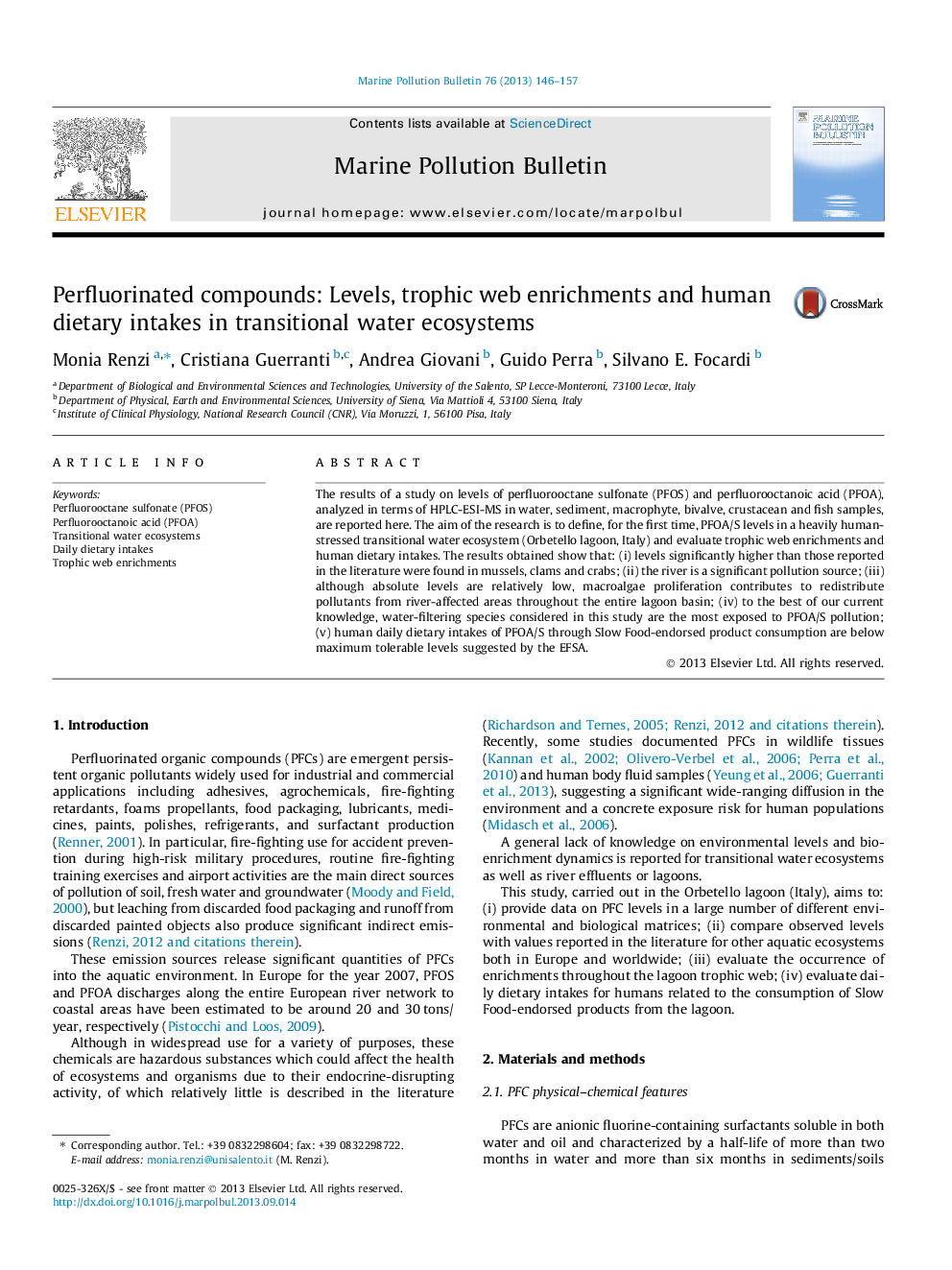| Article ID | Journal | Published Year | Pages | File Type |
|---|---|---|---|---|
| 6359083 | Marine Pollution Bulletin | 2013 | 12 Pages |
Abstract
The results of a study on levels of perfluorooctane sulfonate (PFOS) and perfluorooctanoic acid (PFOA), analyzed in terms of HPLC-ESI-MS in water, sediment, macrophyte, bivalve, crustacean and fish samples, are reported here. The aim of the research is to define, for the first time, PFOA/S levels in a heavily human-stressed transitional water ecosystem (Orbetello lagoon, Italy) and evaluate trophic web enrichments and human dietary intakes. The results obtained show that: (i) levels significantly higher than those reported in the literature were found in mussels, clams and crabs; (ii) the river is a significant pollution source; (iii) although absolute levels are relatively low, macroalgae proliferation contributes to redistribute pollutants from river-affected areas throughout the entire lagoon basin; (iv) to the best of our current knowledge, water-filtering species considered in this study are the most exposed to PFOA/S pollution; (v) human daily dietary intakes of PFOA/S through Slow Food-endorsed product consumption are below maximum tolerable levels suggested by the EFSA.
Related Topics
Physical Sciences and Engineering
Earth and Planetary Sciences
Oceanography
Authors
Monia Renzi, Cristiana Guerranti, Andrea Giovani, Guido Perra, Silvano E. Focardi,
